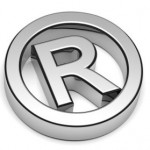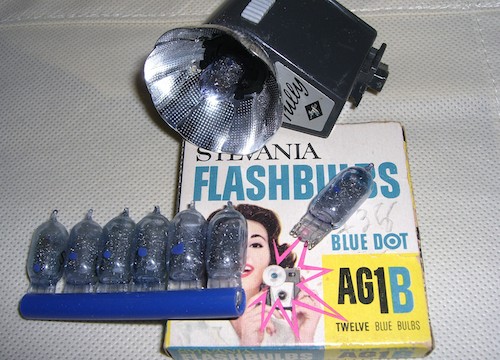Business should always be alert for using as many kinds of intellectual property (IP) protection as possible. High tech entrepreneurs, however, often seemed to be fixed on patents as the answer to their IP protection. Patents are absolutely necessary in many cases, but they are not the whole solution. Trademarks can be equally if not more important.
It does not cost much to develop good trademarks, and they can provide strong protection for your products and business. In addition, trademarks often lead to brand names and corporate identities. As your business becomes widely known in its markets, your brands will become assets of the highest value.
A trademark is the simplest and often the most effective IP protection. A trademark is a broad term that applies to any word, name, symbol or device that manufacturers and merchants use to identify and distinguish goods and services. Trademarks do not have to be registered to use them, but a patent and trademark attorney should register them as soon as possible in all the important market countries as a business expands overseas.
People who copy products for a quick profit usually will try to copy anything that prospective customers associate with that product’s identity. While Asian companies are notorious for this, plenty of American companies do it too. On a trip to Japan in 2006, my business host pointed out ubiquitous coffee shops whose signs differed in presentation and color only in minor ways from Starbucks’ signage. At that time at least, according to my coffee addicted friend, Starbucks was not as popular as their copycat competitors.
Because trademarks do not have to be registered, there is no foolproof way of finding out if a trademark is in use. What you can do is to review the suitability of a proposed trademark by discussing it with experienced people in the business, looking for its use in trade publications, and searching state and national trademark reference guides, which can be found both in libraries and on the Web.
In practice, the suitability of patents versus trademarks for product protection is a murky area. The best strategy may not be clear in the beginning. I recall two interesting examples.
First, when I was studying at MIT, I took a patent course taught by a famous patent attorney, Robert Rhines. He was patent counsel to several major electronic companies in the 1950s and later. Professor Rhines told us his story about the Sylvania Blue Dot camera flash bulbs to illustrate aspects of patents and trademarks.
At that time, his client, Sylvania (now a division of GTE Corporation), was a leading producer of camera flash bulbs. In those days, flash bulbs could only be used once. Often they had air leaks and would not flash. The Sylvania engineers invented a blue chemical dot that was put inside the bulb during the manufacturing process so that the consumer could be assured that the bulb would flash before using it. This dot would be destroyed by air leaking into the bulb. If the photographer saw that there was no blue dot, he or she knew that the bulb would not flash and needed to be replaced.
Flash bulb sales increased dramatically even though it turned out that hardly anyone knew what the purpose of the blue dot was. The blue dot had become a de facto trademark that people associated with quality through advertising and photo dealer recommendations.
A second example of an interesting trademarks and patents case happened when I was working for a medical laboratory equipment company. We manufactured medical test equipment that used disposable plastic test plates. These patented plates replaced the standard racks of test tubes. Being a proprietary innovation at the time, our single-use test plates had become the cash cow of our laboratory equipment business. For years, we moved blissfully along, confident in our patent protection.
Our medical laboratory equipment company was challenged in the English medical laboratory test plates market. The English National Public Hospital System, one of our largest customers, had copied our plates and was manufacturing them itself. Even though the plates were patented in England, The National Public Hospital System manufactured the plates under the rationale of “compelling national interest.”
We sued and the case went all the way to the English high court or the Queen’s Bench. The court surprisingly held that the patent could be infringed in the national interest, but the trademark could not. What trademark?
We were not aware of any of our trademarks that applied in this case. It was our clever English barrister who spotted it. He found out that in molding our plastic plates our machinery made several round impressions. This was where push rods knocked the plates out of their mold. The English court determined, with our barrister’s insistence, that the distinct size and location of our “knockout marks” were a distinctive design that was in fact a trademark. Because these “knockout marks” had been copied by the English hospital system’s manufacturer, our trademark had been violated!
A word of caution!
Patent and trademark attorneys will advise you never to use a trademark as a noun. Think about it. Once a trademark becomes a “generic,” it is no longer enforceable. This happened to such good trademarks as “aspirin” and “escalator.” It almost happened to Kleenex and Xerox. As the Xerox Corporation is fond of saying, to keep the distinction straight, “You can’t xerox a Xerox. But we don’t mind at all if you copy a copy on a Xerox® copier.”

![[IPWatchdog Logo]](https://ipwatchdog.com/wp-content/themes/IPWatchdog%20-%202023/assets/images/temp/logo-small@2x.png)



![[Advertisement]](https://ipwatchdog.com/wp-content/uploads/2024/04/Patent-Litigation-Masters-2024-sidebar-early-bird-ends-Apr-21-last-chance-700x500-1.jpg)

![[Advertisement]](https://ipwatchdog.com/wp-content/uploads/2021/12/WEBINAR-336-x-280-px.png)
![[Advertisement]](https://ipwatchdog.com/wp-content/uploads/2021/12/2021-Patent-Practice-on-Demand-recorded-Feb-2021-336-x-280.jpg)
![[Advertisement]](https://ipwatchdog.com/wp-content/uploads/2021/12/Ad-4-The-Invent-Patent-System™.png)







Join the Discussion
One comment so far.
Anonymous
April 6, 2015 11:30 amAfter the patent for the “blue dot” technology expired, the Third Circuit held that Sylvania could not assert trademark rights in the blue dot because it was functional. See Sylvania Elec. Prods., Inc. v. Dura Elec. Lamp Co., 247 F.2d 730 (3d Cir. 1957). The court recognized that some consumers viewed it as an indicator of source but correctly held that such de facto secondary meaning did not override the finding that the blue dot was functional.